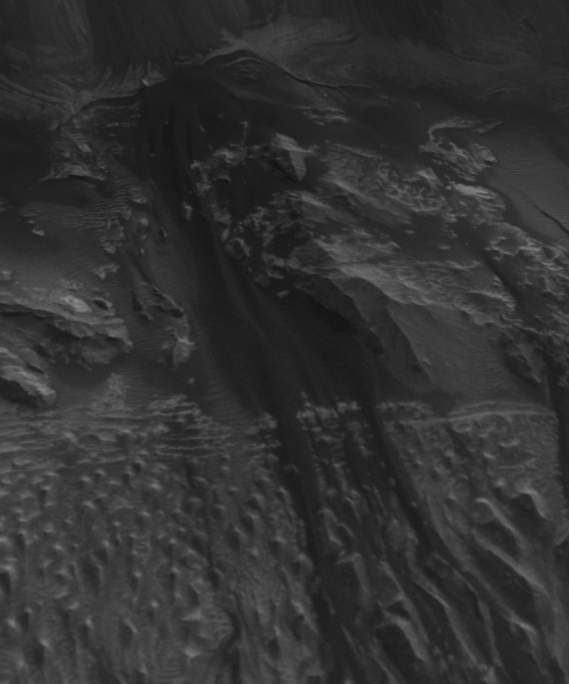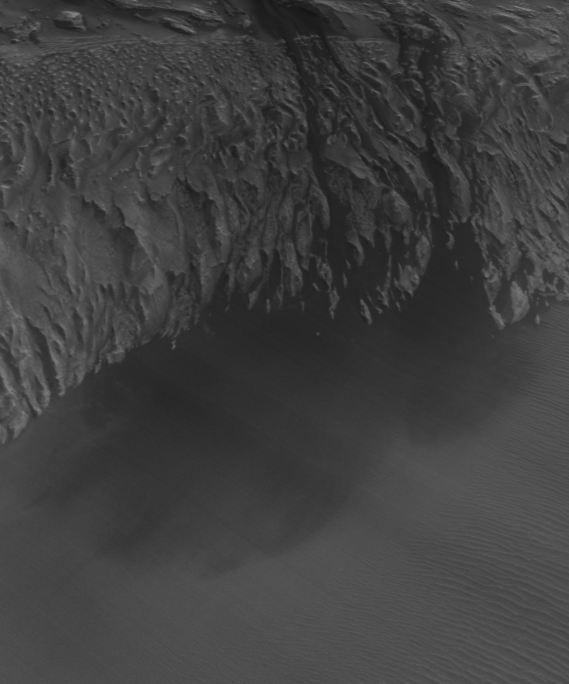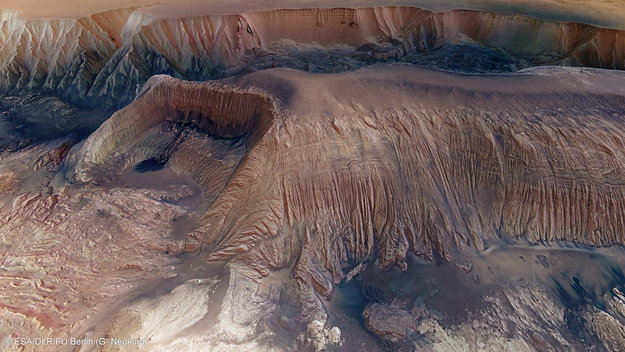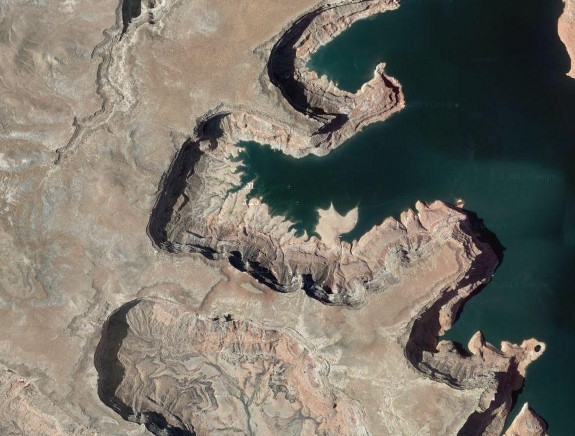It looks like you're using an Ad Blocker.
Please white-list or disable AboveTopSecret.com in your ad-blocking tool.
Thank you.
Some features of ATS will be disabled while you continue to use an ad-blocker.
share:
Phage
reply to post by TBrains
An avalanche is a fall of any material; rocks, sand, ice.
Maybe a landslide then?
www.thefreedictionary.com...
For all we know it's dust.
Either way, I am dying to know what that lake is made off. Hell for all we know it can be oil. Can you imagine the chaos it would be to get there first?
That would be awfully expensive oil by the the time you get to Mars and bring it back.
edit on 10/13/2013 by Phage because: (no reason given)
LOL, so true and we bitch about $4 a gallon!! Maybe he meant the first to get there, drill a well and well, now we know we can't build tankers for it so somehow we need to run a pipeline from Mars to Earth, flexible or stretchable of course and swiveling at the poles, yeah should work!
TBrains
Either way, I am dying to know what that lake is made off.
Looks like dark sand to me. You can see lots of it in other parts of the Hebes Chasma: spaceinimages.esa.int...
Here's the source of the spill that created that "pool". You can clearly see that it's dark sand that has some ripples/dunes:

And here's a closeup of the "pool", which looks nothing like a body of liquid at all, more like the said sand spread over the lighter terrain:

This dark bluish sand can be found all over Mars, including at the foot of Mt Sharp where Curiosity rover is currently operating.

I have yet to see what could be conclusively taken as a body of liquid on Mars. Besides, sand can behave like a liquid in certain circumstances, i.e. flow, ripple, spill over, etc.
edit on 13-10-2013 by wildespace because: (no reason given)
An interesting tidbit from Wikipedia: en.wikipedia.org...
More explained here, in particular about the "dark flow": themis.mars.asu.edu...
The walls of Hebes Chasma weather differently than the slopes on the mesa on its floor. Also, studies of the thermal inertia suggest that the mesa and the walls of the canyon are made of different substances. Thermal inertia is how long the surface holds heat. For example, rocky areas will stay warmer than dust at night. One popular idea that explains the difference between the depression's walls and the mesa slopes is that the mesa was formed from material that accumulated in a lake.
More explained here, in particular about the "dark flow": themis.mars.asu.edu...
At first glance, this dark patch on the northern side of the mesa looks like it might be a lava flow. But THEMIS data show it is more likely a flow of loose, medium-size particles, probably dark basalt sand grains. It lacks the thermal properties of solid rock, which would be the case with an actual lava flow.
A puzzle remains, however, regarding what caused this loose material to flow from the mesa. It could have begun sliding due to cracks in the layers making the slope unstable. But another possibility is that a small outburst of groundwater or melting ice weakened the rocks, making a debris slide more likely. What are the chances of this happening?
Water definitely pooled in parts of Hebes long ago. Data collected by the OMEGA spectrometer on the European Space Agency's Mars Express orbiter identifies places in eastern Hebes that are rich in sulfate minerals. These form by the interaction of water and rocks.
But whether the origin of this dark flow is wet or dry remains an open question for now.
Nasa should land a Rover in a canyon. That is where ou will find life not in a crater where an asteroid obliterated any evidence of life. NASA
supposed to be smart but they really are stupid when it comes to common sense.
Xeven
Nasa should land a Rover in a canyon.
Landing in a canyon has higher probabilities of going wrong than landing on a huge flat space.
That is where ou will find life not in a crater where an asteroid obliterated any evidence of life.
The latest NASA rover, Curiosity, is on a crater that was apparently once filled with water and enough material to make a 5.5 km high mountain.
AthlonSavage
reply to post by NoRulesAllowed
This just proves that Nasa takes hugh definition pictures of Mars and that they are very careful for which ones they give out the public
Well of course. Until they find out a way to capitalize on them, NASA won't show us any photos that prove the existence of ancient human and/or alien artifacts on Mars. There's no such thing as a free lunch, after all. Especially not from a place so fancily named as "The National Aeronautics and Space Administration". That is not the name of a place that gives out free lunches.
But hey, a boy can dream, right? Maybe one day they'll give this bollocks up and just come clean about the presence of extraterrestrial civilizations. What's the big deal? The universe is probably full of trillions of inhabited worlds. Why not? And if one of those civilizations has mastered space travel but haven't eaten us yet, then what more is there possibly to fear besides the inevitable violent collapse of Western society? (A collapse, I might add, which is bound to occur sooner or later anyway!)
Just show us the god damned martians already! All these rocks are getting f#cking boring! Is NASA a space agency or a xeno-geology center?
I'm just kidding. I'm sure the guys at NASA work really hard to get these photos. I for one appreciate them. It's a groovy time to be strange & alive!
TheAnarchist
I'm just kidding. I'm sure the guys at NASA work really hard to get these photos. I for one appreciate them. It's a groovy time to be strange & alive!
As it says in the title, these specific images are from ESA, not from NASA.
ArMaP
Xeven
Nasa should land a Rover in a canyon.
Landing in a canyon has higher probabilities of going wrong than landing on a huge flat space.
That is where ou will find life not in a crater where an asteroid obliterated any evidence of life.
The latest NASA rover, Curiosity, is on a crater that was apparently once filled with water and enough material to make a 5.5 km high mountain.
Either of us could be right. I am betting the first life old or still alive will be found in a canyon on mars and not in a crater. Will talk again when they land in a canyon!
Xeven
Either of us could be right. I am betting the first life old or still alive will be found in a canyon on mars and not in a crater. Will talk again when they land in a canyon!
I also think that there are more probabilities of finding life in the lower regions, one of the reasons being the higher atmospheric pressure, making it easier to have liquid water, but my best bet goes to underground lava tubes and chambers, as those, besides having a higher pressure, are protected from the outside radiation.
That's what I would like to see as the target of an in-depth exploration.
Phage
The words "perspective view" indicate that the image has been manipulated and overlayed on a terrain model, like what Google Earth does. This is the image which was used:
The details of the central mesa inside Hebes Chasma are seen in close-up detail in this perspective view.
The resolution of the image is about 15m/pixel.
Thanks for the actual photo.
Some to stare at for a little bit before bed for work!
reply to post by Soylent Green Is People
Yeah that Section of canyon wall is very symmetrical. Neat how similar they are to the Mars canyon.
Soylent Green Is People
UpEndedWorld
VoidHawk
NoRulesAllowed
A square crater?
Indeed! Someone needs to prove that this is not a computer generated rendering,
similar to those used in manys a sci-fi movie!
NASA are not to be trusted. Simple as!edit on 11/10/2013 by UpEndedWorld because: format
Maybe there is also an impact crater component to that terrain, but I think it looks like a canyon. Perhaps the canyon can sometime after the nearby crater rim was produced.
And square canyons are not terribly uncommon. Here is one I found near the Grand Canyon here on Earth:
Yeah that Section of canyon wall is very symmetrical. Neat how similar they are to the Mars canyon.
reply to post by wildespace
There is some moisture going on there. Its like a spring it seems. Maybe just a trickle or pushing wet sand out.
wildespace
TBrains
Either way, I am dying to know what that lake is made off.
Looks like dark sand to me. You can see lots of it in other parts of the Hebes Chasma: spaceinimages.esa.int...
Here's the source of the spill that created that "pool". You can clearly see that it's dark sand that has some ripples/dunes:
And here's a closeup of the "pool", which looks nothing like a body of liquid at all, more like the said sand spread over the lighter terrain:
This dark bluish sand can be found all over Mars, including at the foot of Mt Sharp where Curiosity rover is currently operating.
I have yet to see what could be conclusively taken as a body of liquid on Mars. Besides, sand can behave like a liquid in certain circumstances, i.e. flow, ripple, spill over, etc.
There is some moisture going on there. Its like a spring it seems. Maybe just a trickle or pushing wet sand out.
If you look closely at the second pic in the OP you will see three cars just left of the bottom middle.
Xeven
Nasa should land a Rover in a canyon. That is where ou will find life not in a crater where an asteroid obliterated any evidence of life. NASA supposed to be smart but they really are stupid when it comes to common sense.
Lets get you a job there, plant you in the next team meeting and let them listen to you tell them how stupid they are. I'm thinking they'd give you about 1000 reasons why they won't land in a canyon. Maybe you'd be like "It's ok I'll let myself out", they be like "nooooooo, come back share your common sense"
Quickly loosing respect for all the people talking about NASA.
The title even tells you where these pictures are from, how are we 3 pages into a thread and people are still talking about NASA relating to the article?
There is a good reason most space agencies do not release RAW data to the public as "press events" or photo ops.
Just look at all the insanity the "parallax" ISON image created. Every time a freaking rock goes through our solar system or a picture of a slightly non-irregular shape is taken, just look at the posts.
Most of the RAW data people ask for is available online, or by request from these agencies. It simply takes effort and understanding that most people do not have to interpret the information.
While there are many secrets kept by ALL space agencies, you can rest assured the day someone photo's undeniable visual proof of built structures on an alien world, they will not stay secret for long. There have been at least a handful of leaks from NASA and JAXA and there is no way something like that would not be leaked.
You think the guy on the other side of the antenna that receives such an image will go quietly when he is told "you're no longer on this project" when they have made it their life's work for the last 5-10 years?
The title even tells you where these pictures are from, how are we 3 pages into a thread and people are still talking about NASA relating to the article?
There is a good reason most space agencies do not release RAW data to the public as "press events" or photo ops.
Just look at all the insanity the "parallax" ISON image created. Every time a freaking rock goes through our solar system or a picture of a slightly non-irregular shape is taken, just look at the posts.
Most of the RAW data people ask for is available online, or by request from these agencies. It simply takes effort and understanding that most people do not have to interpret the information.
While there are many secrets kept by ALL space agencies, you can rest assured the day someone photo's undeniable visual proof of built structures on an alien world, they will not stay secret for long. There have been at least a handful of leaks from NASA and JAXA and there is no way something like that would not be leaked.
You think the guy on the other side of the antenna that receives such an image will go quietly when he is told "you're no longer on this project" when they have made it their life's work for the last 5-10 years?
edit on 14-10-2013 by vind21 because: (no reason given)
new topics
-
Is Russia Using a New Type of Beam Weapon Against Ukraine?
Weaponry: 22 minutes ago -
Here is why Western leaders in NATO have zero fear of nuclear warfare. At all. Zero.
World War Three: 1 hours ago -
International Criminal Court Issues Arrest Warrant For Netanyahu
Breaking Alternative News: 2 hours ago -
racist rant, but she made the arguement to get rid of DEI
US Political Madness: 3 hours ago -
Well we know Putins ICBMs won't fail in their silos
World War Three: 4 hours ago -
Why isn't Psychiatry involved?
Social Issues and Civil Unrest: 10 hours ago
top topics
-
FEMA Head Admits Agency Skipped 20 Homes with Trump Signs
Mainstream News: 14 hours ago, 19 flags -
Yet another Hack...
Rant: 15 hours ago, 13 flags -
Well we know Putins ICBMs won't fail in their silos
World War Three: 4 hours ago, 12 flags -
racist rant, but she made the arguement to get rid of DEI
US Political Madness: 3 hours ago, 9 flags -
International Criminal Court Issues Arrest Warrant For Netanyahu
Breaking Alternative News: 2 hours ago, 8 flags -
Why isn't Psychiatry involved?
Social Issues and Civil Unrest: 10 hours ago, 4 flags -
Here is why Western leaders in NATO have zero fear of nuclear warfare. At all. Zero.
World War Three: 1 hours ago, 4 flags -
Help in song interpretation
Music: 12 hours ago, 3 flags -
Is Russia Using a New Type of Beam Weapon Against Ukraine?
Weaponry: 22 minutes ago, 2 flags
active topics
-
International Criminal Court Issues Arrest Warrant For Netanyahu
Breaking Alternative News • 15 • : CriticalStinker -
Help in song interpretation
Music • 7 • : mysterioustranger -
racist rant, but she made the arguement to get rid of DEI
US Political Madness • 6 • : network dude -
The Fight for Election Integrity Continues -- Audits, Criminal Investigations, Legislative Reform
2024 Elections • 4361 • : WeMustCare -
The Reactionary Conspiracy 13. The plot’s theology.
General Conspiracies • 306 • : Oldcarpy2 -
Well we know Putins ICBMs won't fail in their silos
World War Three • 66 • : Oldcarpy2 -
Is Russia Using a New Type of Beam Weapon Against Ukraine?
Weaponry • 0 • : FamCore -
Post A Funny (T&C Friendly) Pic Part IV: The LOL awakens!
General Chit Chat • 7806 • : angelchemuel -
Why isn't Psychiatry involved?
Social Issues and Civil Unrest • 10 • : FullHeathen -
Russia Ukraine Update Thread - part 3
World War Three • 6845 • : Oldcarpy2


